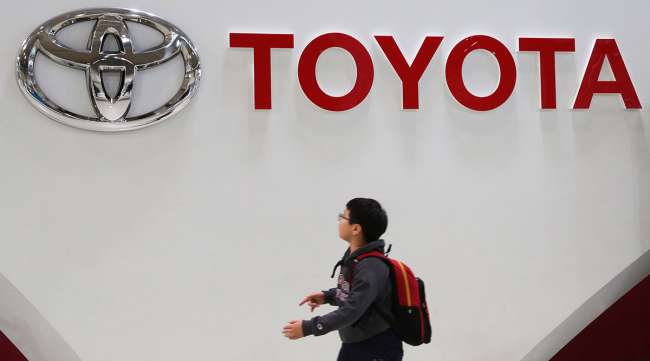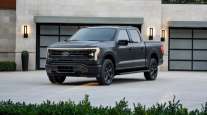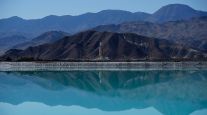Bloomberg News
Toyota Keeps Up Push to Prove It Can Embrace New Technology

[Stay on top of transportation news: Get TTNews in your inbox.]
Toyota Motor Corp.’s campaign to show customers, suppliers and investors that it’s serious about electrification was on display again this month, with another round of demonstrations following a similar effort back in June.
The world’s largest carmaker invited a clutch of journalists on a tour of three factories in Aichi prefecture, near its headquarters in the city of Toyota, last week for another peek at the technology it’s developing to expand production of battery-based electric vehicles as well as a crash course on its famed production system.
The previous workshop came at a critical time for Toyota, just ahead of a shareholders meeting and succeeded in convincing investors the company wasn’t about to sit idle as the global auto industry shifts toward electrification and automation. Toyota detailed plans to commercialize solid-state batteries, roll out 10 new electric models and sell 1.5 million battery-electric vehicles annually by 2026.
This time around, after a two-hour bullet train from Tokyo and a short bus ride, reporters heard from engineers at the Teiho plant, who gave a briefing on the progress they’ve made in developing bipolar, liquid iron phosphate batteries that Toyota aims to roll out in 2026 or 2027 alongside a full lineup of battery EVs.
The engineers were eager to give a progress report, saying they’d never done such presentations before and were “happy to share their work with the world.” They highlighted the headway they’ve made in finding a way to evenly apply electrolytes — the black, metallic coating needed to build anodes and cathodes. Even so, they said stacking the flat batteries quickly and seamlessly without damaging them remains a big hurdle for mass production.

Gragg Wilson of UPS won grand champion honors at the National Truck Driving Championships. Wilson takes us through the competition's course, successful driving practices and how to attract new drivers. Tune in above or by going to RoadSigns.ttnews.com.
If successful, such batteries will improve range by 20%, reduce costs by 40% and charge to 80% full in 30 minutes or less, according to Toyota.
The next day, reporters moved on to Toyota’s Myochi plant, where workers demonstrated how a massive cast can use melted aluminum under 4,000 tons of pressure to create large sections of a vehicle’s chassis. This method will eventually be supplemented by a so-called gigacast, which allows an EV chassis to be built in three parts owing to the simplicity of its design versus the hundreds of components needed to build each section in current models.
It’s a production technique pioneered by Tesla Inc., after Elon Musk saw a toy model of a Model S and pushed his engineers to find a way to die-cast entire car sections, according to a biography of the billionaire published this month. The U.S. electric carmaker may soon use gigacast technology to create an entire underbody of an EV in one piece, according to a Reuters report.
Toyota’s not quite there yet.
Its gigacast prototype revealed last week in Nagoya was a one-tenth scale model that stood half a meter tall. Once it’s life-sized and functional, though, Toyota will look to churn out EVs by the millions, like it has for years with gasoline and hybrid cars.
The tour’s last stop was the Motomachi plant, Toyota’s oldest and biggest factory. There, engineers are developing what they call a self-propelled BEV assembly line.
The idea is that, because EVs won’t fill a factory with noxious fumes and endanger workers, they can drive themselves through production once they get a motor and a set of wheels. A simple remote control device connected to a series of surveillance cameras will guide each vehicle through the factory, eliminating the need for industrial conveyor belts.
Toyota says this will reduce upfront plant investments and improve the flexibility of assembly lines when they need to be adjusted or if a new model is introduced.
Want more news? Listen to today's daily briefing above or go here for more info
Even now, the facility itself is a sight to behold. Nine different models — from sedans and compact minivans to fully electric vehicles and police cars — are being assembled on a single, mixed manufacturing line. A collage of human and machine appendages move constantly in an intricate but simple dance. Rolling platforms with integrated tools enable each worker to move swiftly from one car to the next.
This choreography was developed over decades under the doctrine of the Toyota Production System, or TPS, which stresses functionality and condemns waste but, above all, strives for incremental refinement of any process in order to perfect the final product.
In a way, embracing new ideas such as the gigacast is part of the TPS philosophy. The company will need to be flexible if it wants to reach net zero carbon emissions even after becoming capable of building and selling 10 million cars every year.
The difference now is that Toyota, under CEO Koji Sato, who took over in April, is more willing to talk publicly about what it’s doing to try and change.




